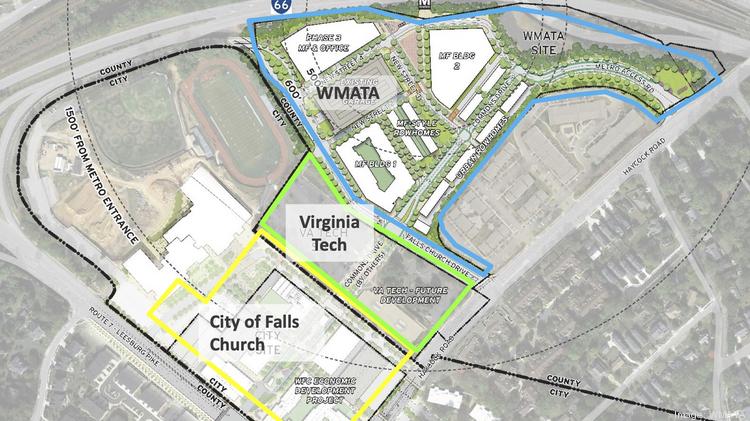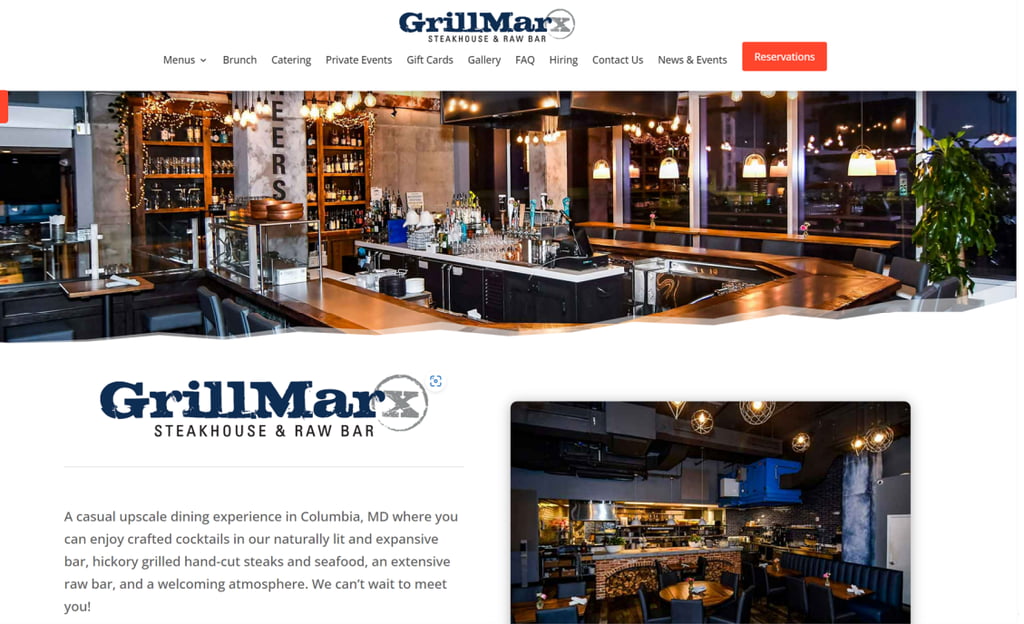Updates from Letty – November 17, 2023
Blog posts are the personal views of Letty Hardi and not official statements or records on behalf of the Falls Church City Council
Dear Friends,
Thank you for the well wishes and support of my re-election. Six women on the City Council is truly historic and I’m looking forward to continuing to serve the city and move Falls Church forward. I’m ready to get back to work! On that note – as this is my first post in 2 weeks, there’s a lot to catch up. This week’s post will have a bit of everything:
- 20 mph speed limits
- New “where students live” data (one of the top misconceptions I’ve fielded for 8 years)
- Our newly adopted climate goal and action plan
- Economic development potpourri – with a hot of the presses dining guide, the sale of the Virginia Tech site, and a new restaurant coming soon
If you read nothing else this week, I encourage you to get to the climate plan item. Climate change is clearly a global, existential issue and while the challenge may seem daunting, we can do our part. And it goes beyond saving one tree at a time, composting, recycling – all good and necessary, but insufficient. But don’t just take my word for it – per usual, I’ll link to some other sources if you’d like to dig deeper.
I look forward to hearing from you.
Best,
Letty
What Happened This Week:
(1) 20 mph speed limits
As I wrote about back in October as one of the many ways we’re working to improve traffic and pedestrian safety – the new 20 mph speed limit change is underway. New signs have been going up the past few weeks, with an official unveiling yesterday and completion by next week. The new 20 mph speed limits legally go into effect on each street when the existing speed limit signs are replaced. Police will provide a 60-day warning period before citations begin for the new 20 mph speed limit. You can pick up a yard sign or post in neighborhood online groups to help spread the word to your neighborhood too.
(2) Where Do Students Live?
The annual “where students live” analysis is out, which gives us a more thorough picture of the student enrollment growth that made the headlines a few months ago. I have yet to see any other jurisdiction that collects, analyzes, and uses this data on such a granular level for planning, so it is a testament to the good collaboration across general government and schools.
When I Iast wrote about it in September, we only had the enrollment by school. Takeaways from the new data:
- Total students: 2634 (3.3% increase from last year), still slightly below the enrollment of 2707 in FY18 and we haven’t bounced fully back from the Covid drops in enrollment.
- Students from new mixed use buildings make up less than 9% of the total enrollment at 230 students, below the FY18 number of 234 and that was before Founders Row opened. In comparison, single family homes contribute 62% of the students and older condos/apartments/townhouses contribute 29%.
- Founders Row, now fully stabilized at 95% occupied, houses 45 students (vs our original pupil projections of 43-65 students) which gives us further confidence that the pupil generation ratios in the fiscal models we use for each new project continue to hold up well.

So what’s next? We’ve also jointly hired a demographer to project city and student population to 2050 for annual budget and out years capacity planning. The School Board previewed a draft of the demographer report and we’ll see a final report at our annual joint meeting in early December. With three projects underway, we know the city will grow. And most importantly, we are ready for that growth as we have both the anticipated fiscal benefits from each project and school capacity.
(3) New climate goal & action plan
This week, we adopted a new, ambitious climate goal for Falls Church to be carbon neutral by the year 2050, which aligns with our neighbors and Virginia’s goals, and drives more urgency to addressing climate change. Previously, our goals matched the regional goals to reduce emissions of greenhouse gases (GHGs) by 20% by 2020 and 80% by 2050, with an interim goal of 50% reduction in regional GHG emissions by 2030.
In addition, we adopted a new Community Energy Action Plan (CEAP), which lays out 6 strategies and 4 actions within each strategy, and has been underway since the summer. (The staff report is a good cliff notes version if you want to quickly read the 24 actions.) As I last wrote about it in October when we reviewed the draft plan, the most meaningful ways to reduce GHGs require changes in transportation and buildings. That requires some bold changes in behavior, like making choices to drive less and keep investing in other modes of transportation like walking and biking.
Letty’s Thoughts:
The adoption of the plan was more contentious than I thought would be for a community with high environmental values. I was disappointed we didn’t have a unanimous vote on the plan (it was 4-2), due to 1 of the 24 strategies listed proposed included ideas for zoning and density changes that reduce the need for car travel (and the associated GHGs) and makes greener modes more viable for everyday errands and commuting. The plan proposes several ideas – accessory dwelling units, multiple units per lot, minimum lot sizes, changing variance processes for non conforming homes (so the only option isn’t a teardown), reducing parking requirements – all strategies being considered and implemented across the US. To be clear, each of these ideas merit more study and community discussion and they are far from a done deal. However, these strategies are supported by two facts. #1 – at the local level, when people can live in denser, walkable neighborhoods that meet their daily needs, they drive less and even if they drive, they make shorter trips. Not to mention that smaller homes take less energy to heat and cool. #2 – At a broader regional level, reducing development in the exurbs (ie, sprawl) is good for reducing GHGs as it reduces congestion and helps preserve important green and open space in the exurbs. This doesn’t mean we aspire to be New York City, but it does mean envisioning how we use our land differently, especially in the inner ring suburbs of DC where land is at a premium. Here are a few articles I encourage you to read:
NY Times: “Households in denser neighborhoods close to city centers tend to be responsible for fewer planet-warming greenhouse gases, on average, than households in the rest of the country. Residents in these areas typically drive less because jobs and stores are nearby and they can more easily walk, bike or take public transit. And they’re more likely to live in smaller homes or apartments that require less energy to heat and cool. Moving further from city centers, average emissions per household typically increase as homes get bigger and residents tend to drive longer distances.”
Brookings: “Simply put, the United States cannot reach its GHG reduction targets if our urban areas continue to grow as they have in the past. After decades of sprawl, the U.S. has the dubious honor of being a world leader in both building-related energy consumption and vehicle miles traveled per capita. Making matters worse, lower-density development also pollutes our water and requires higher relative emissions during the initial construction…we know “gentle density” offers sizable housing units while still promoting energy-efficient buildings and transportation behavior…”
Greater Greater Washington: “Low-density areas, more driving, higher energy use from larger houses (as well as housing type, and higher consumption increase greenhouse gases. This means suburban ZIP codes can emit up to four times the household emissions of their urban counterparts –enough to more than wipe out any gains from lower C02 emission-households in higher density areas.”
(4) Economic Development Potpourri
Virginia Tech land sale – over a year ago, the city and VT sold the 7 acre site that was previously the UVA/VT grad center. The closing occurred this week with the City’s share of the sale proceeds being $8.4M. This Washington Business Journal article shares more information about the Hitt Construction headquarters and VT’s Coalition for Smart Construction and the broader three projects for the West Falls Church area.
Little City Dining Guide – our Economic Development Office has updated and compiled a new dining guide that lists all the eateries we have in town. Coming soon is an interactive map.
Speaking of restaurants, from the EDA meeting this week, we learned of a new restaurant coming to the 455 Tinner Hill building by the end of 2024 (the 10K square foot space, across the plaza from Victory Comics).
What’s Coming Up:
Monday, November 20 – City Council Meeting*
Monday, November 27 – City Council Meeting*
Monday, December 4 – Joint City Council/School Board Meeting (6 pm, MHS)
Monday, December 11 – City Council Meeting*
*Mondays (except 5th Mondays and holidays) at 7:30 pm. You can access the agenda and livestream here, including recordings of past meetings